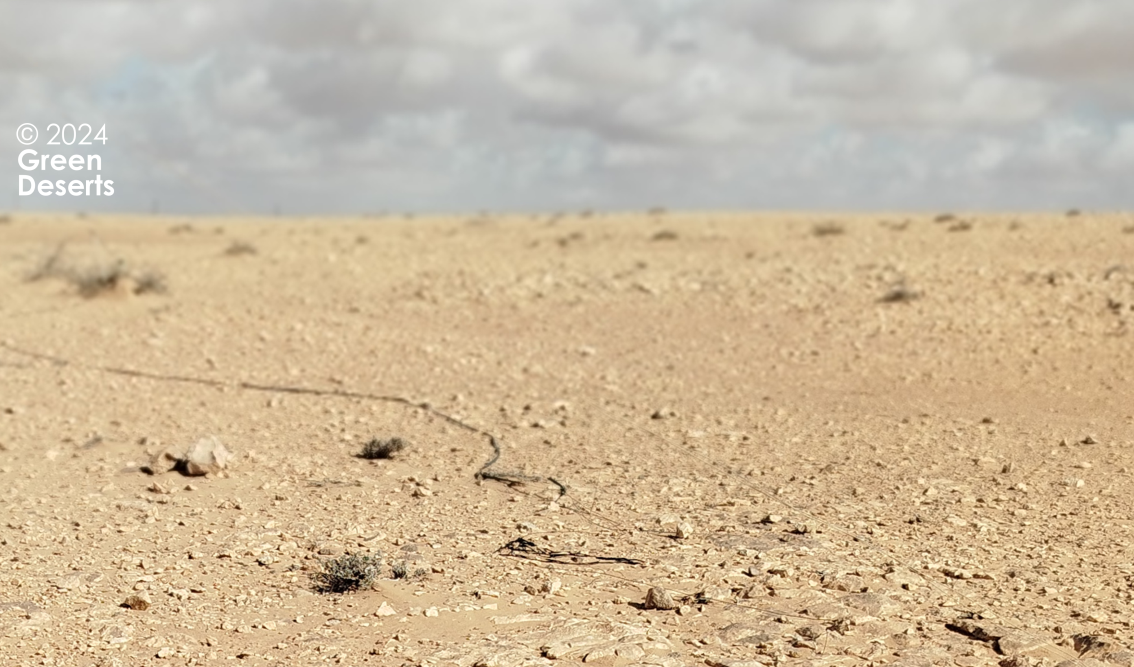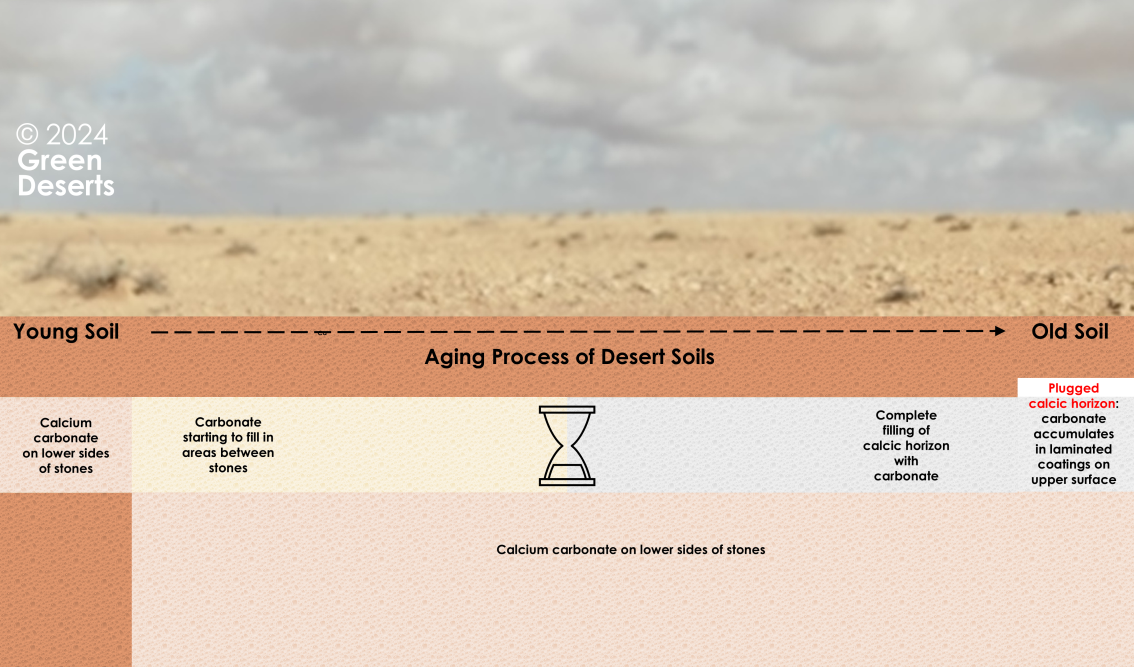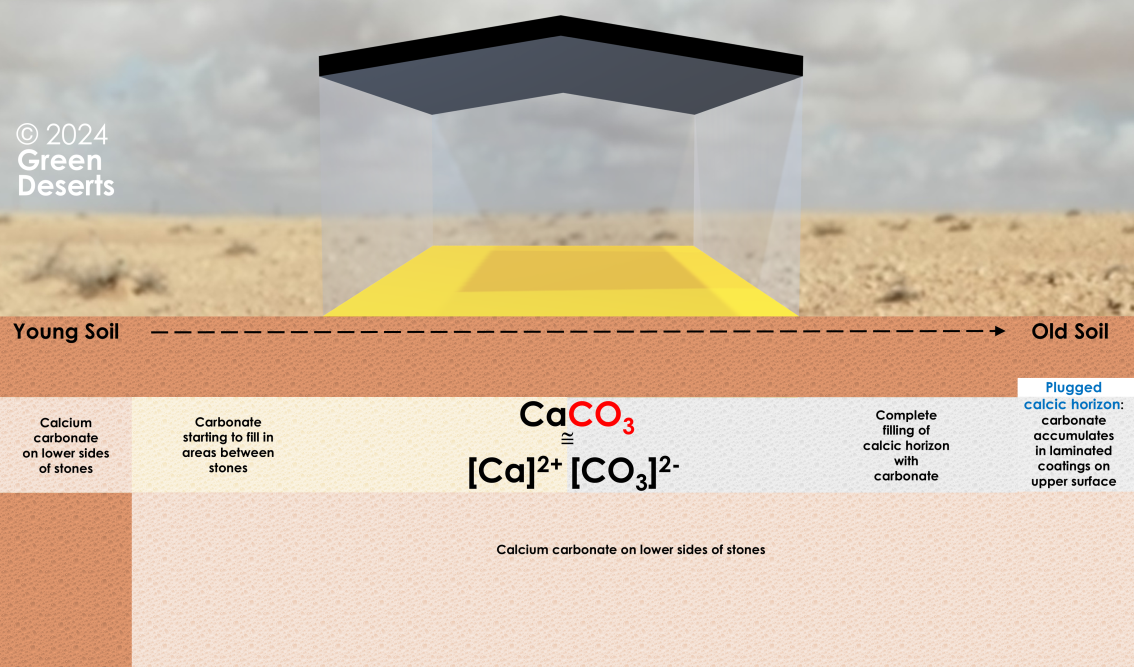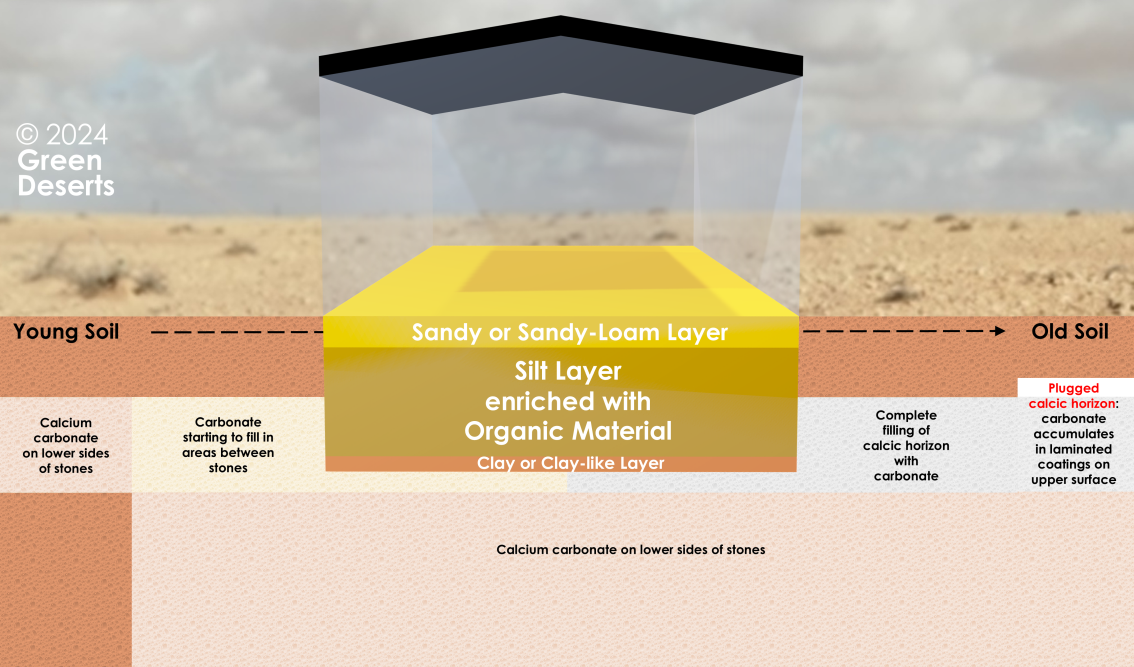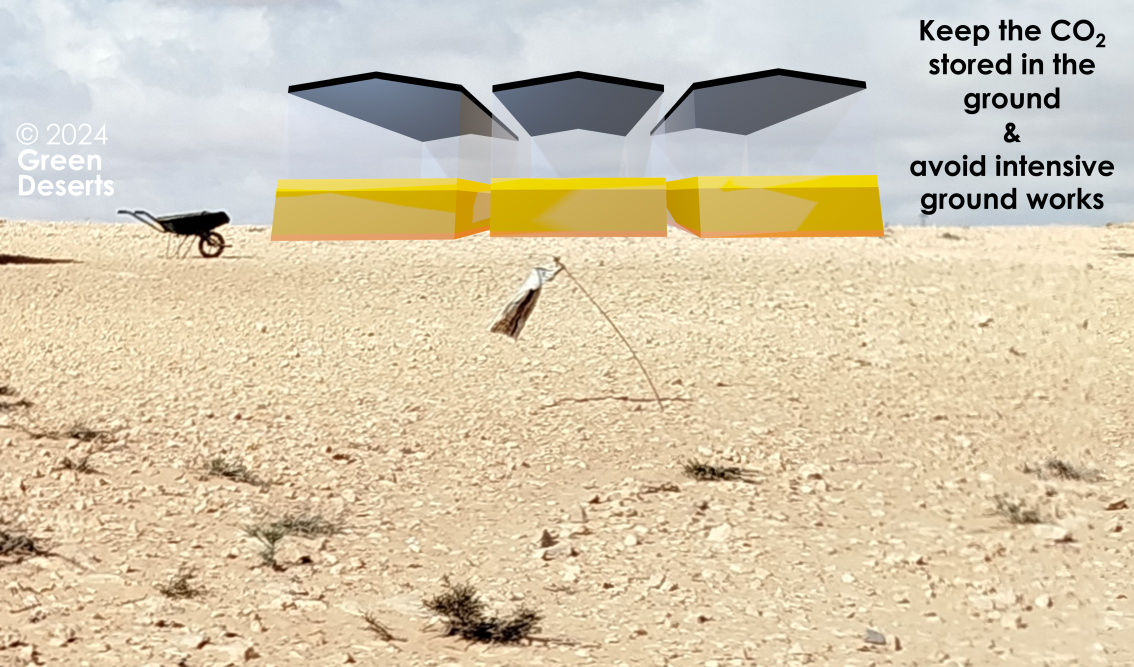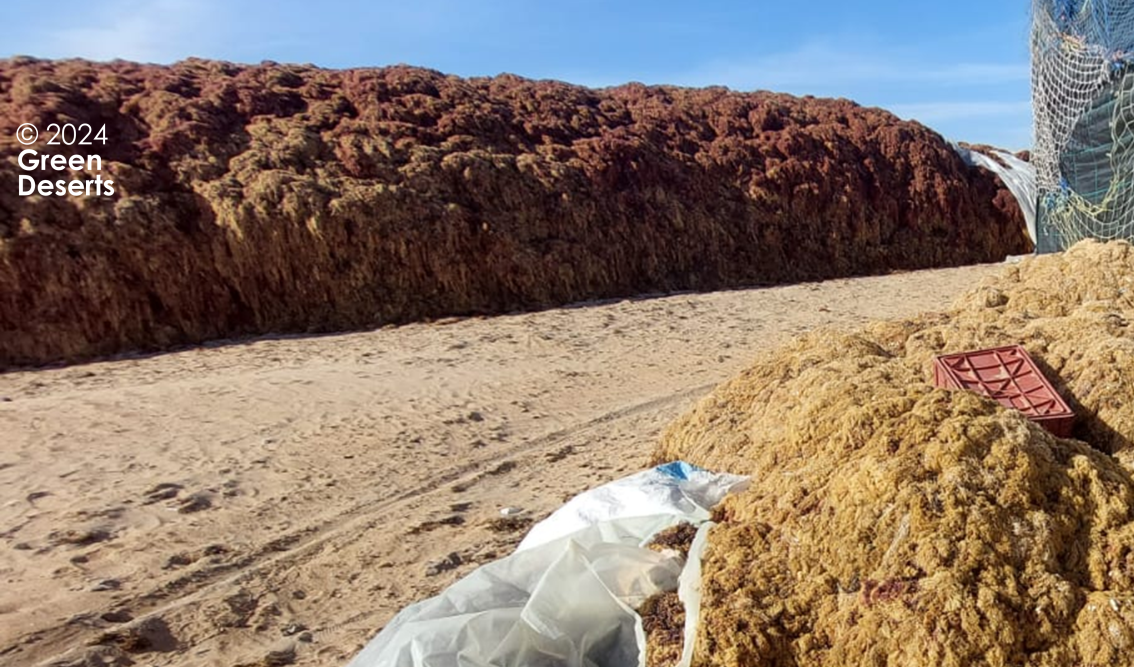The need for solutions like 'Green Deserts' is obvious: desert regions are vast, devastated, and almost abandoned areas offering little hope to make a living.
Soils are dryed out, and water can only be found in oases or aquifers deep below the surface. Furthermore, soils can have hard and thick layers of calcium carbonate (CaCO3) which impede any agricultural use. Besides, scooping the carbonate means removing a natural sink of carbon dioxide.
Accordingly, it might be a better strategy to place any artificial layer on top of this solid base. This is even more true since by this there would be a much larger area available on which desert sands could be allocated.
For enriching the milled desert sands, we suggest to use any organic matter available. For example, masses of dead algae get washed up onto the shores of the Atlantic ocean. They are harvested by residents and checked for sellable species due to gelatinous compounds which can be used for producing Agar Agar, a high-carbohydrate ingredient used in restaurant kitchens.
But also imports of organic waste from European countries could be an option. Every year there are tons of autumn leaves that are carried away from the cities to be composted elsewhere. In addition, there still are lots of food products getting thrown away and also composted. Thus, instead of composting them in Europe one could think of transporting all this organic matter to those places low in nutrients.
Of course, the oversupply of manure from live stocks might be the easiest and the best option for both of the continents. Instead of oil tanks running from Africa to Europe, there might only be manure tanks on their way from Europe to Africa in future times.

